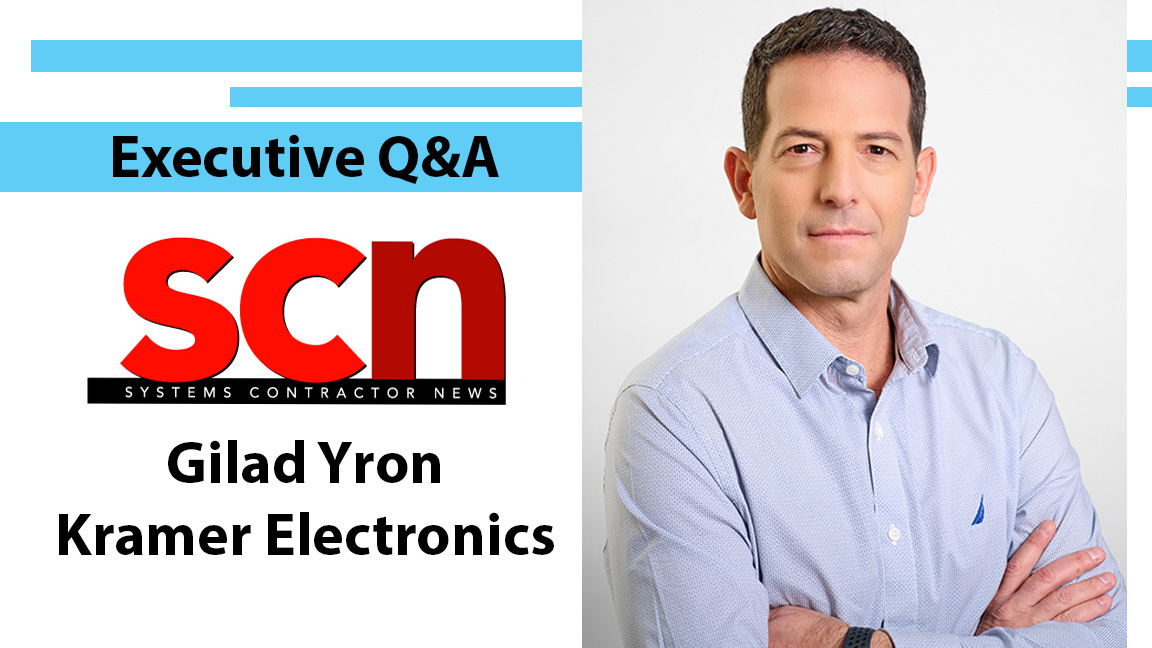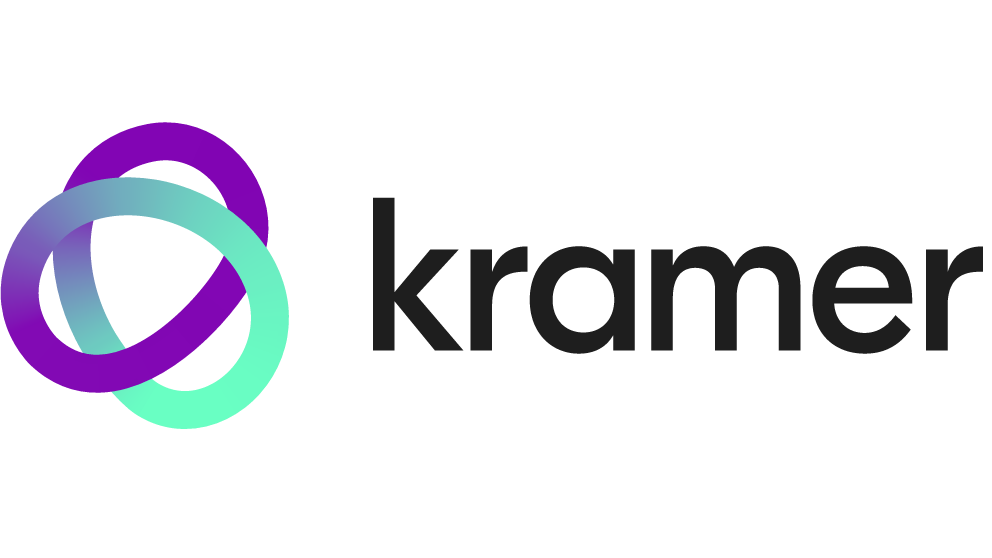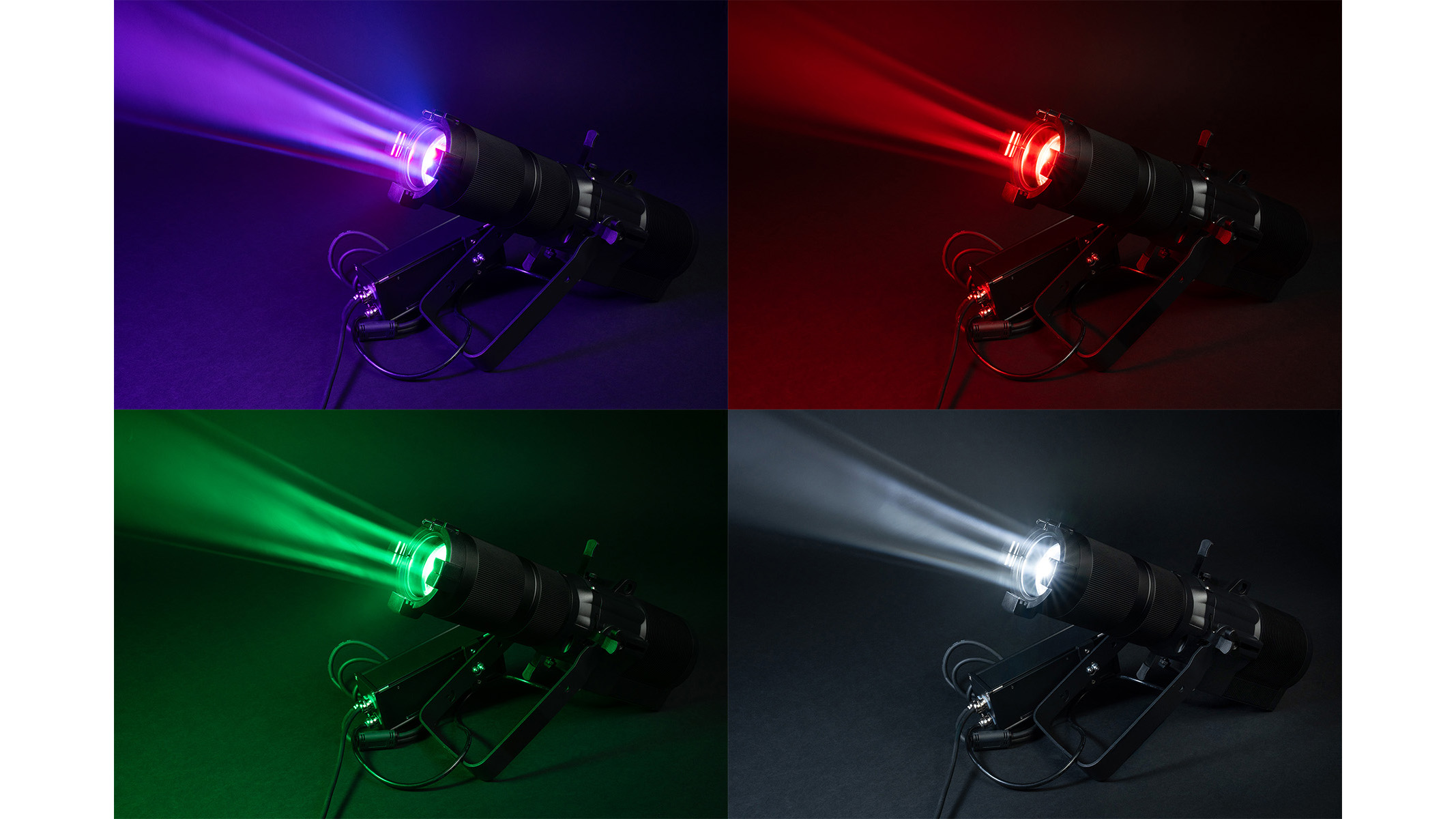Executive Q&A: All About Interoperability
Gilad Yron, CEO of Kramer Electronics Ltd., is positioning the company to support multiple platforms.

SCN: How long have you been with this company, and what are your responsibilities?
Gilad Yron: I joined Kramer in April 2021 as CEO.
SCN: How has your background prepared you for your role?
GY: I came to Kramer after several years in C-level roles, and before that I amassed a great deal of experience in all aspects of business management, marketing, and sales. My deep experience in global technology companies, where my responsibilities in different positions spanned Asia, Europe, and North America, is directly relevant to where Kramer is today and the direction we are going.
[Kramer Brings New Life to Morgan County EOC]
SCN: You recently said Kramer’s acquisition of UC Workspace was part of an effort to reinvent the collaboration process. Can you expand on that?
GY: Meetings and collaboration are our daily routines—and we laugh when it takes seven minutes to initiate a meeting—but it’s actually a kind of purgatory that we’re all suffering through right now. We’re accustomed to a less-than-ideal overall experience, but we believe such compromises shouldn’t be accepted.

The demand for intuitive, simple, and inclusive collaboration solutions is increasing, and we’ve defined this area as a goal for Kramer. We want to change the way people and organizations engage with each other. There are many platforms out there but no unification, so we’re creating a layer that supports work across multiple platforms. We want to make people and organizations work more productively—less time wasted on connectivity and more time spent on collaboration.
SCN: Beyond collaboration, how is Kramer working to improve the user experience (UX) across its product lines?
A daily selection of features, industry news, and analysis for AV/IT professionals. Sign up below.
GY: We’re approaching the UX challenge in two spheres. First, we’re aligning Kramer native products—all our solutions for the physi-digi world—around the same, intuitive UX. Second, we’re addressing the whole ecosystem, treating interoperability not as a catchphrase but as a business philosophy. Fundamentally, we understand that users do have choices and whatever they choose, we want to support it, and be able to be part of it. We’re moving forward quickly to expand and enrich our ecosystem on all levels, to standardize the market and make interoperability a fact of life, not a slogan.
SCN: Where do you see the pro AV industry heading?
GY: We are in the middle of a perfect storm that is transforming our industry. The pandemic accelerated trends that otherwise would have taken decades to play out. The entrance of the software giants and the leading consumer electronics companies, especially in peripherals and the ongoing convergence of the IT and AV industries, represents fantastic opportunities to elevate audiovisual experiences. This is the breakpoint when we go from picking up the phone to collaborating in the metaverse.
SCN: How is Kramer adapting to minimize supply chain issues?
GY: We are lucky to have extremely strong financial backing that allows us to ensure our supply chain. In recent months, anticipating supply chain issues, we dramatically increased our inventory levels and we strengthened elements in our supply chain that would otherwise be vulnerable to the current global shortages.
We want to make people and organizations work more productively—less time wasted on connectivity and more time spent on collaboration.
We are very proud of our state-of-the-art operation and supply chain readiness during the COVID-19 period. Early on, Kramer equipped itself with all required parts and products to continue supporting our customers. Unlike many other players in the industry, Kramer met all its supply requirements, and we’re continuing to proactively plan for resilience in stock and supply for the next couple of years.
SCN: What are the short and long-term goals for your company?
GY: We are focusing simultaneously on enhancing our customer-facing infrastructure and strengthening and deepening our technological capabilities. In the last couple of months, we’ve been working to revamp our go-to-market strategy and scale up the organization, including adding personnel in customer services, sales, and marketing. We’re building a regional infrastructure and bringing in a new team of executives to lead our customer-facing organization.
On the technological and product side, we accelerated investment in research and development, increasing our R&D budget substantially. And we recently completed two acquisitions—UC Workspace and WOW Vision. With the advantage of our global R&D being in Israel, we are continuing to leverage the very dynamic and flourishing environment of the Start-Up Nation.
SCN: What new initiatives are we likely to see from Kramer?
GY: While we have many projects already underway and ambitious plans going forward, our initiatives are and will always be around driving additional customer value and solving substantial pain points through technology. You can expect to see a significant expansion of our portfolio across multiple product lines, and significant advances that bring a greater degree of simplicity for everyone in the value chain—integrators, AV and IT departments, and, of course, end users. We will continue to expand our ecosystem and partnerships to give users more choice, more simplicity, and more freedom to work the way they like to work, and collaborate with anyone, anywhere, at any time.
SCN: How can systems contractors better position themselves to profit from products and/or services you have to offer?
GY: Looking at our value creation hierarchy, it all starts with the end user value. It’s woven into our customer-centric business philosophy. So, we want to work with system contractors who are dedicated to delivering end user value. Beyond that, they need to understand that the world of collaboration is changing and be willing to step up to address the changing needs. In that respect, we’re here to help them succeed. We recently invested in our customer service and customer-facing infrastructure, and we’re continuing to develop new services to better support our partners.

Mark J. Pescatore, Ph.D., has been the content director of Systems Contractor News since 2021. During his career, he's hosted and programmed two ongoing regional industry trade shows (including Future B2B's AV/IT Summit), produced and hosted podcasts and webinars focused on the professional video marketplace, taught more than a dozen college communication courses, co-authored the book Working with HDV, and co-edited two editions of The Guide to Digital Television.
